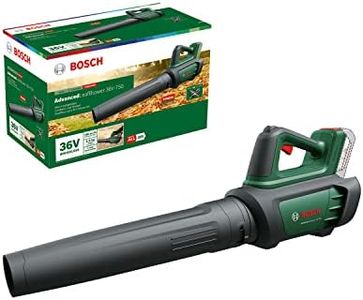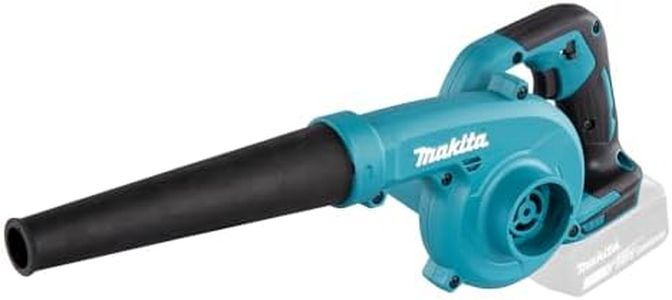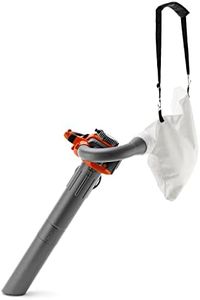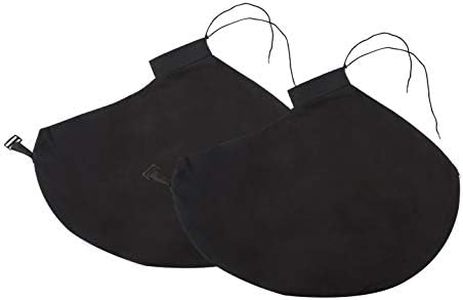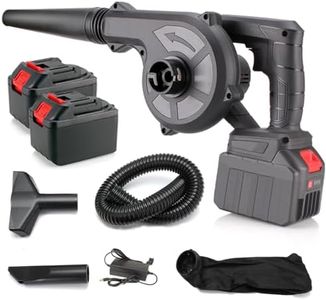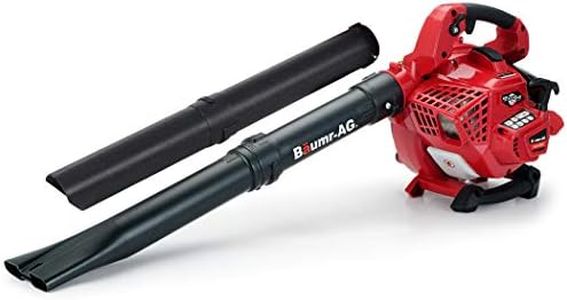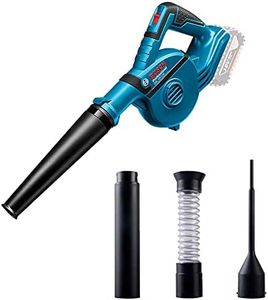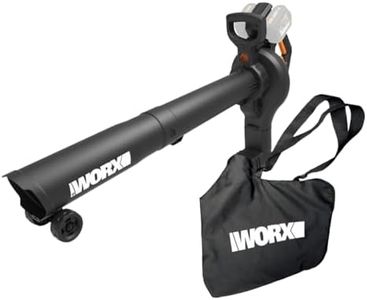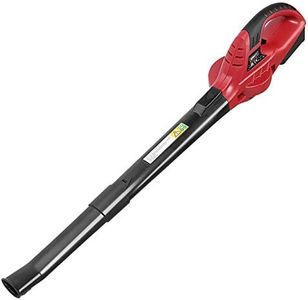We Use CookiesWe use cookies to enhance the security, performance,
functionality and for analytical and promotional activities. By continuing to browse this site you
are agreeing to our privacy policy
10 Best Leaf Vacuums
From leading brands and best sellers available on the web.Buying Guide for the Best Leaf Vacuums
Choosing the right leaf vacuum can make yard cleanup much easier and faster. With so many options available, it's important to understand what features and specifications matter most. Matching the leaf vacuum's capabilities to your yard size and the kinds of debris you deal with will help you find the best fit. Focus on your unique needs, such as yard size, the amount and type of leaves, how often you plan to use it, and any additional features that could make the job easier or more comfortable for you.Power SourceThe power source describes what fuels the leaf vacuum—commonly electricity (corded), battery (cordless), or gas. This spec is important because it affects how long and how freely you can work. Corded electric models offer continuous power but restrict your movement to the length of the cord, making them best for smaller yards close to a power outlet. Cordless (battery-powered) vacuums allow you to move anywhere but are limited by battery life, so they're great for small to medium yards if you don't mind recharging. Gas-powered vacuums provide the most mobility and power, which is helpful for large yards or heavy-duty jobs, but they tend to be heavier and louder, and require more maintenance. Consider your yard size and how far from an outlet you’ll be working to pick the best option.
Suction Power (CFM and MPH)Suction power in leaf vacuums is usually measured by two values: CFM (cubic feet per minute) and MPH (miles per hour). CFM indicates how much air the vacuum moves per minute, which matters for picking up a lot of leaves or heavier debris. MPH reflects how fast the air moves, which helps dislodge stubborn or wet leaves. Lower values suit light, dry leaves in small spaces, while higher numbers are ideal if your yard has wet or matted leaves, or if you frequently pick up pine needles or acorns. Match the vacuum’s power to the typical debris and yard conditions you face.
Mulching RatioThe mulching ratio shows how much the vacuum can reduce leaf volume by shredding them. For example, a 10:1 ratio means ten bags of leaves can be mulched down to fit in one bag. This is important if you want to minimize the amount of waste you need to dispose of or make mulch for your garden. Lower ratios are fine for light work, but if you have many trees or want to compost your leaves efficiently, look for a higher mulching ratio to save time and effort emptying the bag.
Bag CapacityBag capacity measures how much the leaf vacuum can hold before it needs to be emptied. A larger bag means you can work longer without stopping, which is handy for big yards or lots of leaves. Smaller bags make the tool lighter and easier to handle, which might suit small yards or users who prefer something less bulky. Think about how much time you’d like to spend emptying the bag versus carrying a heavier load when choosing bag size.
Weight and ErgonomicsWeight and ergonomics determine how comfortable the vacuum is to use, especially over long periods. Lightweight models are easier to maneuver and reduce fatigue, which helps if you are working for a long time or have a lot of obstacles. Heavier models may offer more power, but you’ll want to check for features like padded straps, handles, or wheels for easier handling. Choose a vacuum that matches your physical comfort and the duration of your typical cleanup sessions.
Additional Features (Blower Function, Variable Speed, Nozzle Design)Some leaf vacuums include extra features like a blower function, which lets you switch between vacuuming and blowing leaves, or variable speed controls for more precise handling. Nozzle design can affect how easily you get into corners or under bushes. These features can improve flexibility and efficiency, so consider which ones would help with your specific yard setup. If your yard has tricky spots, tight spaces, or varied debris, look for models that let you easily adapt to different tasks.


